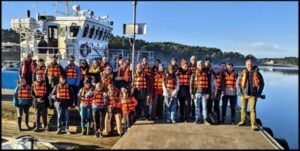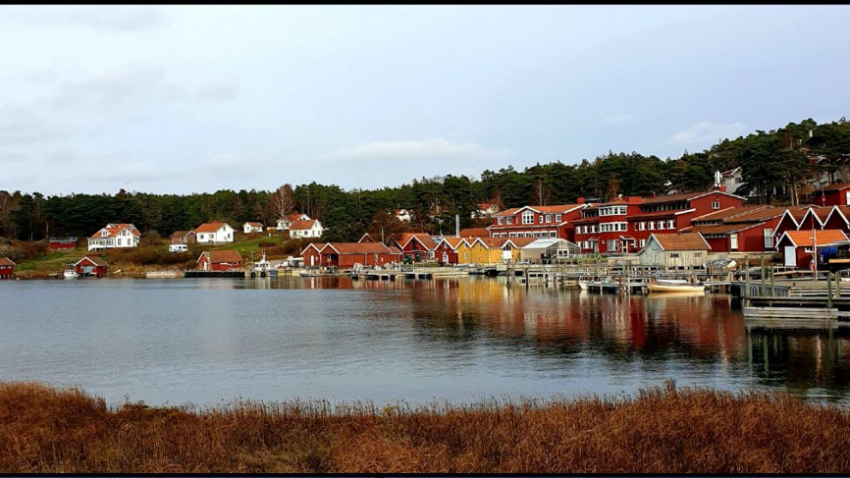With the present-day remarkable computing speeds used in the Earth system models and super-sensitive measurement techniques for collecting observational data, the time has come to combine these in a complementary fashion. For example, models can be constrained using observations and experiments can be inspired by model simulations. This is exactly what the eScience course organized by Paul Zieger from the Department of Environmental Science, Stockholm University, and Michael Schulz from the University of Oslo aims at, wherein every year, budding scientists get an opportunity to learn the process of linking models and observations from experts.
This year, the course took place at the Tjärnö Marine Laboratory located in one of the most species-rich marine areas of Gothenburg during the month of November. It was a great opportunity to interact in person after more than a year of social distancing. Several Masters’ and PhD students from universities in Sweden, Norway, Germany, and Spain with a range of diverse backgrounds participated. They were introduced and trained to do Earth System Analysis using data from various climate models, model databases, atmospheric and oceanic databases, satellite databases, as well as model data evaluation portals. This was achieved through a combination of lectures and tutorials. Students were given insights into a host of topics, such as cloud microphysical processes, climate evolution, cryosphere-climate interaction, organic aerosols as well as the basics of earth system modelling and introduction to climate-relevant Python libraries.
However, the main emphasis of the course was placed on intensive group work and a final report that was to be submitted by each student after the course. Students were divided into small groups of 3 each of which had an assistant to work on individual projects in the realm of climate data evaluation and analysis. The Galaxy research platform and Pangeo software ecosystem were used for this purpose while Jupyter notebooks were used to document the results from data analysis and related literature review. Additionally, each group had to give two presentations during the course – one to report the progress and the other to discuss the results. In addition, the students and assistants were asked to peer-review the reports, so that everyone could receive some constructive feedback.

All in all, the course was a perfect opportunity to not only learn Earth System Analysis using both models and observations but also to train oneself in presenting, discussing and peer-reviewing project reports – all that goes into making a good scientist.
On a separate note, the course also involved some daily time for nature walks and a boat excursion to the Kosterhavet National Park, which is an information center with an exhibition informing about marine life in the form of texts, pictures and interactive stations. These activities allowed everyone, including students, assistants and professors to interact and bond with each other. These small breaks during the middle of the day and the ice-breaker session and farewell party at the start and the end of the course refueled everyone with creativity and fostered a cheerful learning environment despite the intensive coursework.
The next course in eScience Tools will take place on 31 October- 11 November 2022.
Text: Sneha Agarwal, PhD student at the Department of Environmental Science, Stockholm University


